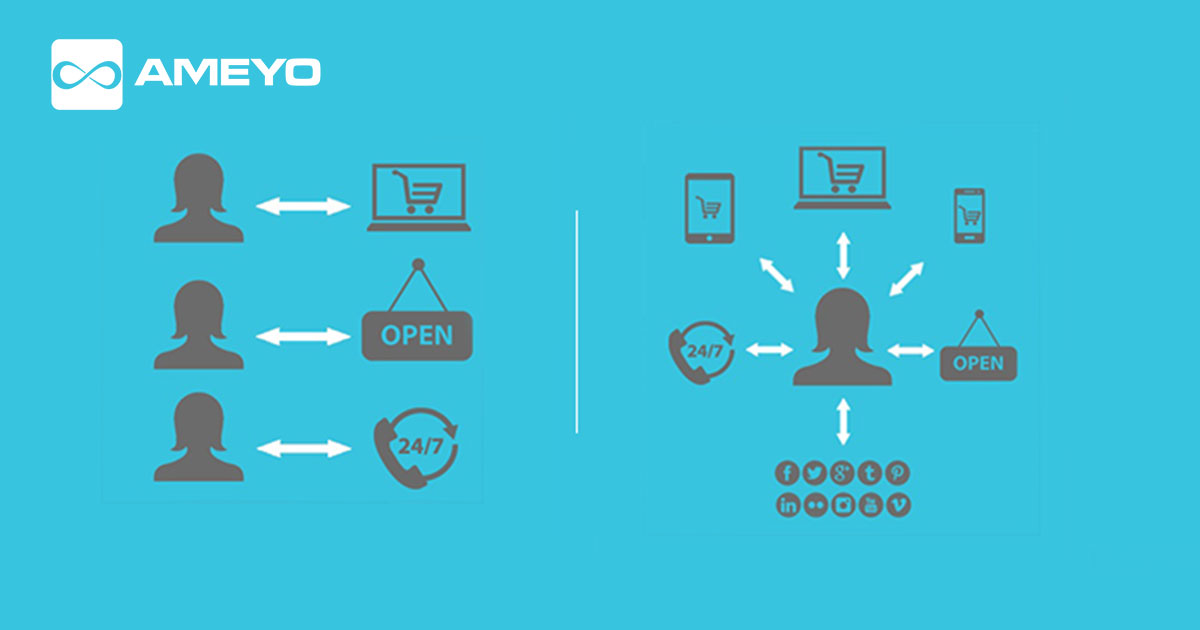Mr. Henry was ordering food with the help of a food delivery app, but got stuck due to an error while making payment. Eventually his money was received by the app but the order was not confirmed. He thought to interact with the customer support agent using the live chat feature, but the option was not available. He tried calling the customer support department, but the queue was so long that he decided to try another option. Finally, he made a post on the Social Media page of the company, but did not get any response even after 5 days.
Mr. Henry wanted a seamless interaction experience but his story ended up on a sad note, where only support through phone was available but due to long hold time, he was unable to interact with the customer care agent.
Imagine a scenario where your company page promises something and the information provided to the customer by your customer service department is totally different. What happens when the customer tweets a message, then chooses the live chat option for further interaction? Will the agent on live assistance have all the records of the previous interaction through tweets, or will the customer have to start from the beginning? All these questions point towards the inability of organizations to serve customers on different channels of interaction.
Previously, customer service consisted of multichannel mode of communication where customers communicated with companies through different channels that were not integrated among themselves. Thus, it was necessary for businesses to search for an option to suffice the increasing demands of customers. Customers today are tech savvy and want everything with ease. They expect more and seek for seamless and consistent experience across all touch points. Organizations are therefore swiftly making a move from multichannel to omnichannel interaction to better serve customers.
Unlike the multichannel communication mode, omnichannel customer engagement model helps in tracking the entire customer journey and thereby, creating a consistent and optimised experience. Customers have the freedom to switch between different channels without any hassles such as loss of information, or the need to repeat existing information.
Here are few things to consider when moving from multichannel to omnichannel contact center business model:
Evaluate Gaps and Potential Outcomes
In order to adopt the omnichannel mode of communication, organizations need to work on the loopholes in their existing business process. Thereby, able to analyze the existing customer data. Thereafter, business inputs can be used to provide useful insights for implementing the new omnichannel process of communication. Feedback from customers and customer service agents can be helpful in designing the new strategy.
Break Down the Silos
Disconnected and ineffective touch points not only creates a negative impact on the work culture of the customer service department, but at the same time hampers the efficiency and productivity of support agents. Siloed channels reduce the capability of agents to use data and insights for making important business decisions. Thus, it depends on the organizations to remove hindrances and communication silos for ensuring a seamless transition from one channel to another channel.
Work on the Existing Business Model
Adopting the omnichannel contact center model doesn’t mean that organizations need to replace their existing business model. Changes can be made to the existing business model to ensure great user experience. For Example: Organizations can use their current tools to segment the market and designate value proposition for them using various channels. Also, organizations can use the existing platforms to manage the other non-voice channels.
Build an Efficient Process
For a seamless transition to omnichannel contact center software, organizations must ensure that all their important business process that impact customers and their strategic decision making process should be well scrutinized and optimized accordingly for providing quality service to customers. Organizations can analyze their interdepartmental andintradepartmental processes like updating the sales and customer service departments on the latest discounts and promotional offers. The alignment of work and goals between different departments will ensure that all people related to the organization have the same knowledge base about business processes.
Plan a Seamless and Consistent Movement
There is a huge difference between the operational environment of multichannel and omnichannel business model. Moving from multichannel to omnichannel contact center model involves a seamless and consistent plan. Organizations must ensure that customers do not face any glitches during the movement process. For example – If the customer opts out of a social media conversation and decides to further converse with the agent on call, the shift from one channel to another should be hassle free without any possible disconnect. The agent should exactly know the point from where the customer previously left the interaction and can thereafter, lead the conversation with the available information to offer best in class service. Seamless movement from one channel to another is also one of the major challenges for organizations. With the help of cloud contact center technology, organizations can move from multichannel to omnichannel mode with ease.
Drive the New Omnichannel Strategy for your Organization
After implementing the omnichannel mode of communication, it is necessary for organizations to evolve and grow to stay ahead of competition. Thus, interacting with loyal customers and brand advocates on a regular basis can be of great help towards driving a new strategy. Also, engaging customers through social media platforms and other campaigns can add value to the current plan. Active listening and proactive customer service can be beneficial in revamping the current game plan. Therefore, organizations need to get in an action mode to optimize interaction touch points so that they can operate as one platform to engage the tech-savvy customers at the right time using the most relevant mode of communication.


